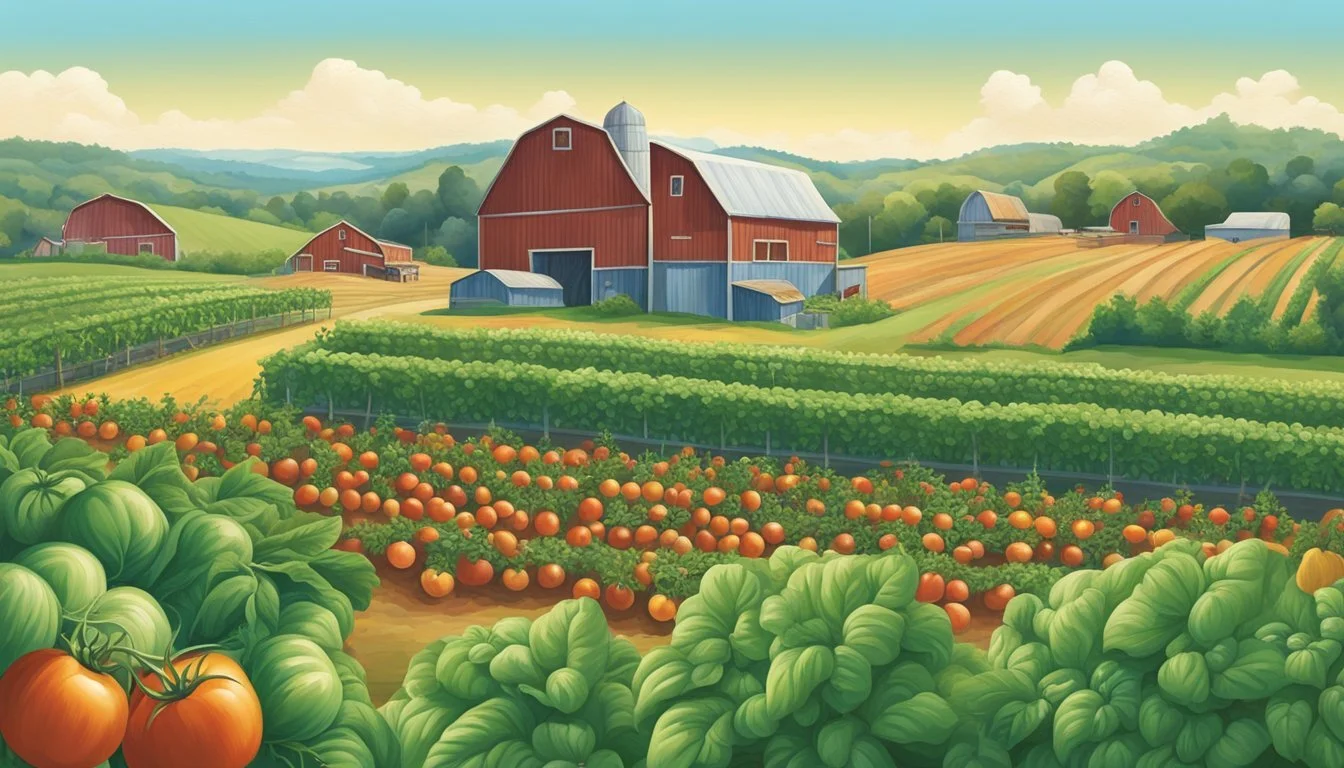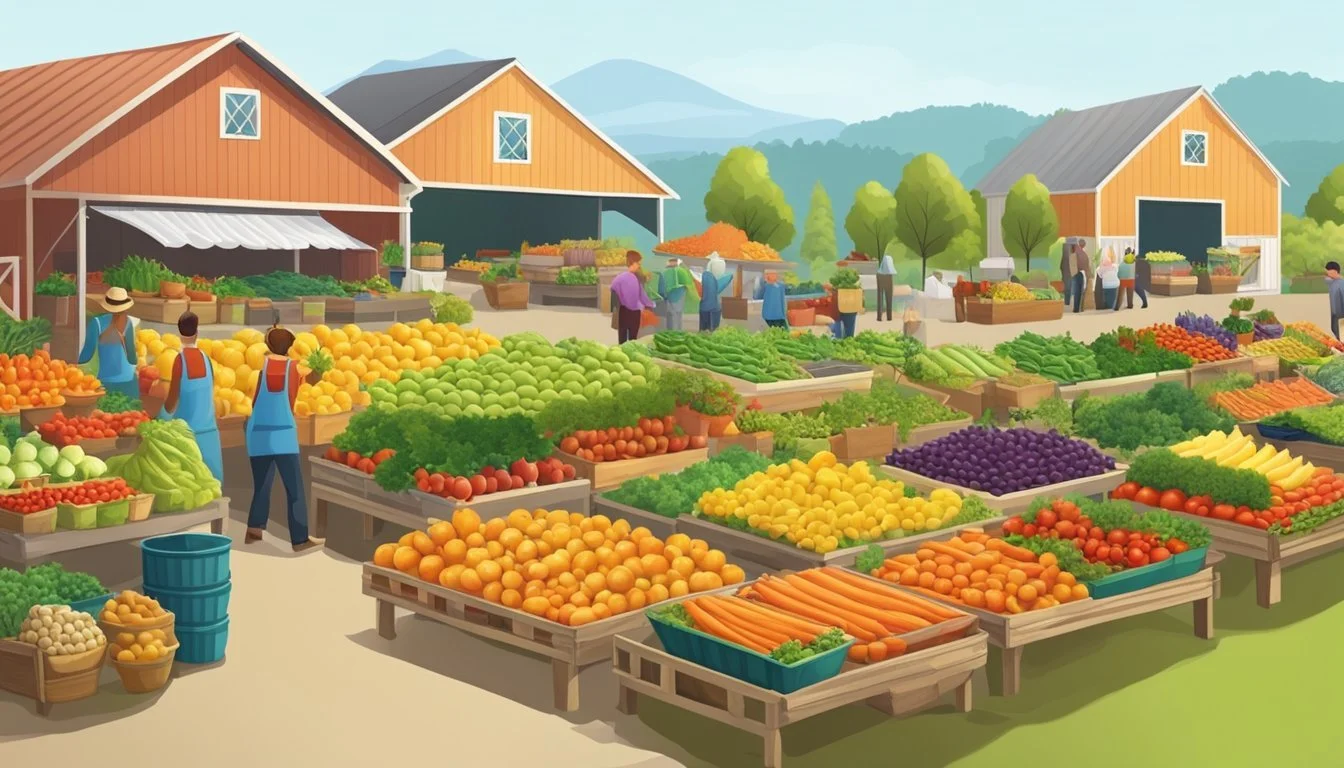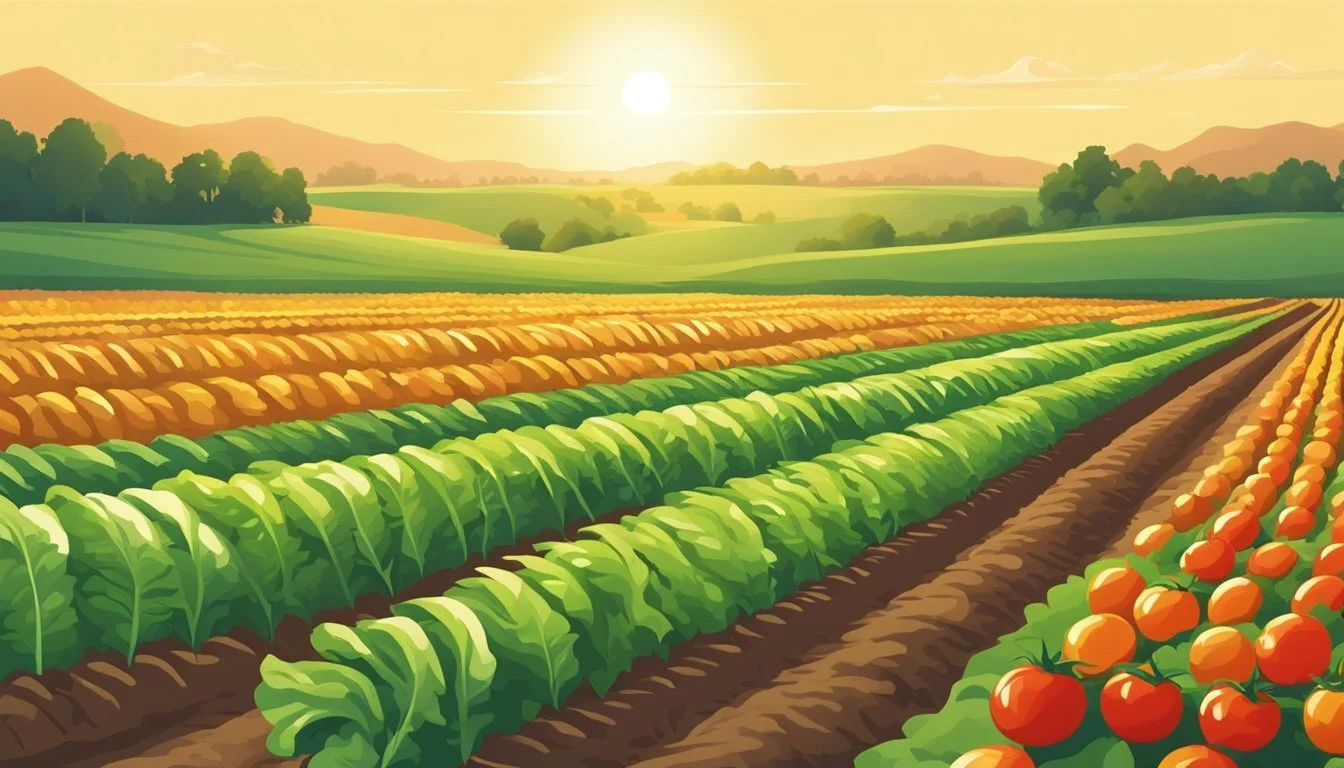Most Profitable Crops for Small Farms
Maximizing Earnings on Limited Land
Small farms play a crucial role in the agricultural industry, providing a diverse array of crops that cater to both local and international markets. Profitable farming on a smaller scale often hinges on selecting the right crops that offer high returns relative to their cost of production. While traditional staples such as grains and cotton have their place, a shift toward high-value crops can significantly increase revenue. Lucrative cash crops such as specialty culinary herbs, fruits, and niche horticultural products often command premium prices, especially when sold directly to consumers or offered as part of value-added products.
Crops like garlic and lavender are particularly valuable for small farms due to their ability to thrive in a variety of climates and their popularity in a wide range of dishes and products. Similarly, in regions with warm climates, citrus and goji berries have become profitable plants thanks to their health benefits and demand in the market. It's not just the food products that are valuable; trees like pecans are increasingly seen as a worthwhile investment due to their improved varieties and the prices they can fetch. For those in areas such as East or West Texas, where the climate is suited to pecan trees, establishing an orchard could serve as a long-term source of revenue.
Understanding market trends, production costs, and the labor required is essential for a small farm's success. While certain crops like oyster mushrooms (What wine goes well with mushrooms?) have relatively low space and production requirements, they can be labor-intensive. Meanwhile, crops used for livestock feed, such as perennial grasses, can offer a steady income with an existing market in regions with a strong ranching industry. Optimal crop rotation strategies and utilizing crop varieties suited to the local climate also contribute to the farm's business viability. Small farm operators, including many Latino farm operators in Central and South Texas, have found plenty of opportunity for agricultural revenue in meeting consumer sales demands with these valuable cash crops.
Evaluating Crop Profit Potential
In assessing the profitability of crops for small farms, it is essential to examine specific factors such as yield, costs, labor needs, and market dynamics. These elements determine a crop’s viability and potential to contribute to farm revenue.
Yields, Prices and Production Costs
Yields: Key to profitability, yields vary widely among crops. Strawberries and microgreens often produce substantial yields in limited spaces, while crops like saffron require more land but command high prices due to their labor-intensive nature. Prices: The market price of crops, such as specialty herbs and organic vegetables, can offer high returns. Production Costs: Costs include inputs like seeds, soil amendments, and irrigation which can be substantial for crops like citrus, requiring ideal growing conditions.
Strawberries
Average Yield: 50,000 lbs/acre
Average Price: Premium
Production Cost: High
Microgreens
Average Yield: Varies
Average Price: Premium
Production Cost: Moderate
Saffron
Average Yield: 10 lbs/acre
Average Price: High
Production Cost: High
Citrus
Average Yield: 20 tons/acre
Average Price: Variable
Production Cost: High
Labor Requirements
Labor cost plays a crucial role in crop selection. Bulb crops like garlic require considerable hand labor for planting and harvesting. In contrast, crops amenable to mechanization, such as grain, can save on labor costs. Specialty crops like mushrooms need skilled labor, dictating higher labor investment.
Market Demand and Trends
Market demand dictates crop choice; for example, organically grown products fetch premium prices and are increasing in consumer preference. Trends also suggest a growing market for superfoods like goji berries, appealing to health-conscious consumers. International markets can offer larger revenue streams but may involve complex logistics.
Organic Produce
Market Demand: High
Trending: Yes
Notes: Premium prices, growing consumer base
Goji Berries
Market Demand: Moderate
Trending: Yes
Notes: Superfood, high antioxidant properties
Specialty Herbs
Market Demand: High
Trending: Stable
Notes: Culinary use, valued in diverse dishes
Mushrooms
Market Demand: High
Trending: Yes
Notes: Oyster mushrooms attract premium price
Recognizing the right blend of profitability factors helps farmers optimize their production and ensures sustained agricultural revenue.
Major Field Crops
In the realm of small farm profitability, the selection of major field crops plays a pivotal role. They offer a blend of high-value agricultural products and can adapt to various market demands and climatic conditions.
Cotton and Grain Crops
Cotton stands out as a lucrative cash crop especially in areas like West Texas, which is an ideal location benefiting from a warm climate conducive to cotton farming. On the other hand, grain crops such as corn serve a dual purpose, being a staple food crop and an essential livestock feed, including poultry feed. These crops demand a strategic approach to farming, often necessitating a crop rotation strategy to maintain soil health while meeting the international markets' growing needs. In terms of output, farmers measure success by tons per acre, with regions like East Texas often leading as the largest producer of certain grains.
Forage Crops
Forage crops are a backbone for livestock feed and play a vital role in the sustainability of both small and large ranches. Perennial grasses and other forage crops like alfalfa are valuable due to their high nutritional value for cattle and other game animals. They work well in rotational grazing systems and feed grain production, often employed by Latino farm operators in Central and South Texas. These operators not only contribute significantly to the agricultural industry, but also create substantial employment opportunities with their efficient and cost-effective farm production systems.
High Value Produce Crops
Selecting the most profitable crops is essential for small farms aiming to maximize returns. Focusing on vegetables, fruits and berries, and herbs and mushrooms that are in high demand can lead to more lucrative results.
Vegetables
Garlic: Requires minimal space and has a significant market demand, positioning it as a valuable crop.
Cherry Tomatoes: High yield per acre and popular in a variety of dishes; a warm climate is beneficial for growth.
Fruits and Berries
Goji Berries: These berries are not only a superfood but also a lucrative crop, fetching premium prices in the market.
Citrus Crops: Including oranges and lemons, citrus trees thrive in tropical climates and are a staple in consumer sales.
Herbs and Mushrooms
Gourmet Mushrooms: Varieties like oyster mushrooms command a high market price, yielding significant revenue with low production costs.
Basil: A popular culinary herb, basil plays a crucial role in both fresh markets and value-added products like pesto.
Lucrative Perennial Crops
Perennial crops play a pivotal role in a farm's long-term sustainability and profitability due to their ability to provide a steady output over many years with comparatively lower labor costs once established.
Citrus and Other Fruit Trees
Citrus and other fruit trees are a valuable cash crop for small farms, especially in regions like Central and South Texas, where the climate is conducive to their growth. Citrus crops require an adequate investment in time and space but can yield high returns. For example, oranges, lemons, and grapefruits are popular crops not only for fresh markets but also for value-added products like juices and preserves, catering to diverse market demands.
Pecans and Nut Trees
Pecan trees are another highly lucrative crop for regions like East Texas where the soil and climate conditions are ideal. With proper care, improved varieties of these trees can produce yields of several thousand pounds per acre, translating into significant revenue for farm businesses. Nut trees not only deliver nuts (how long do nuts last?) that are a staple in many dishes but their timber also adds to their profitability.
Grapes and Berries
Grapes and various berries represent a wide range of profitable plants for small farmers. North Carolina, for example, has a thriving market for horticultural products, including berries, which can be sold directly to consumers or used to make jellies, wines, and other food products. The climate in certain areas of the United States allows for the cultivation of grapes, which form the backbone of a lucrative wine industry. Despite the high initial input, vineyards can be an excellent long-term investment due to the demand in both national and international markets.
Specialty and Value-Added Products
Small farms can maximize profitability by focusing on specialty and value-added products that cater to niche markets and allow for premium pricing. These products range from specialty sweeteners and nursery plants to unique herbal and fruit-derived items.
Honey, Maple Syrup, and Sorghum
Honey: (how long does honey last?) Bees not only play a vital role in pollination but also provide honey, a valuable cash crop. Apiaries require relatively little space and can produce a wide variety of honey.
Maple Syrup: For farms in regions with cold winters, like the Northeastern United States, maple syrup can be a lucrative product. It is labor-intensive but yields a high return.
Sorghum (how long does sorghum last?) Syrup: Especially popular in the Southeast, sorghum syrup (how long does sorghum syrup last?) offers a versatile sweetener. It’s adaptive to a range of climates and holds a revered place in traditional southern dishes.
Nursery Plants and Flowers
Nursery Plants: From ornamental trees to shrubs, nursery plants satisfy a steady demand. For instance, in regions like East Texas, improved varieties of pecan trees are profitable nursery plants.
Flowers: Cut flowers and ornamentals provide high value with limited land use. Greenhouses can extend growing seasons, making this a popular crop with high market demands.
Herb and Fruit Products
Herbs: Culinary herbs like basil, mint, and cilantro are valuable crops due to low production cost and high consumer demand. They can often be grown in high densities, further maximizing space.
Fruit Products: Small farms can transform fruits into jams, jellies, and preserves, adding value to the fresh produce. Berries, for example, can yield significant revenue through both fresh market sales and value-added products.
Keys to Maximizing Profits
To maximize profits on a small farm, focusing on efficient production, direct marketing channels, and on-farm processing is essential. These strategies help leverage the value of crops and agricultural products.
Efficient Production Practices
Efficient production practices are critical for maximizing the profitability of valuable crops. Important factors include:
Crop Selection: Choose valuable cash crops like berries, leafy greens, and culinary herbs that are suited to the farm's climate.
Space Utilization: Implement a crop rotation strategy to make the best use of available space and maintain soil health.
Cost Management: Control labor costs by automating where possible and using practices that reduce the need for manual labor.
Climate Consideration: For farms in regions with warm climates, such as Central and South Texas, growing citrus crops can be especially profitable due to lower risk of cold winters.
Direct Marketing Channels
Utilizing direct marketing channels plays a vital role in farmers' abilities to capture more revenue per unit. Key approaches include:
Farmers' Markets: Selling directly to consumers at local markets allows farmers to receive full retail prices.
Community Supported Agriculture (CSA): Operating a CSA can ensure a stable market and upfront payment for crops.
Online Sales: Creating an online platform can open up wider markets, including international consumers, particularly for specialty products like goji berries.
On-Farm Processing
On-farm processing can significantly increase the value of agricultural products. By converting raw produce into value-added products, small farms can increase their profits. Examples include:
Food Products: Transforming raw milk into cheese or berries into jams.
Horticultural Products: Creating floral arrangements from cut flowers grown on the farm can command a higher price.
Dried Goods: Drying herbs and mushrooms, like oyster mushrooms, to sell at a premium price due to the reduced production cost and extended shelf life.
Choosing the Best Crops for Your Farm
Selecting the most profitable plants for a small farm hinges on understanding local climate conditions, the farm's operational capabilities, and diversification strategies to balance risk and reward.
Matching Crops to Your Climate
The climate of your region plays a pivotal role in determining which crops will thrive. Warmer climates may favor citrus crops and heirloom tomatoes, known for fetching a premium price at local markets. Conversely, regions with cold winters might be more suitable for cultivating hardy bulb crops or perennial grasses. Assessing the average temperatures, rainfall, and season length will guide farmers in selecting the most valuable cash crops for their specific location.
Evaluating Equipment and Facilities
Farm production efficiency directly relates to the available equipment and facilities. For crops such as cotton, which is prevalent in areas like Central and South Texas, specialized harvesting machinery may be necessary, adding to the investment and labor costs. On the other hand, crops with lower mechanization requirements like culinary herbs can be lucrative cash crops for farms with limited infrastructure, often providing higher revenue per acre with less initial investment.
Diversifying to Spread Risk
Embracing a variety of crops can mitigate the risk inherent in agriculture. A strategic crop rotation strategy not only maintains soil health but also responds to market trends and demands. By including both popular food crops and specialty horticultural products like oyster mushrooms or goji berries, which can offer higher returns and access to niche markets, farmers can protect their agricultural revenue streams. It's crucial for farm business owners to balance their crop portfolio with both staple commodities and high-value, niche market products to maximize profitability and ensure long-term sustainability.








